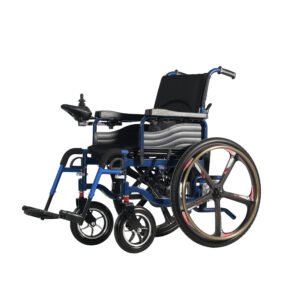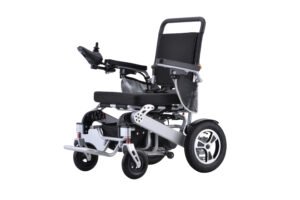Electric wheelchairs provide great convenience for people with mobility impairments, and when choosing an electric wheelchair, the configuration of the battery is an important consideration factor. Currently, the electric wheelchairs commonly used in the market have two types of batteries: lead-acid batteries and lithium batteries. Most electric wheelchairs have one place to install the battery, while some have two places. Some even have three batteries. They have their own characteristics and are suitable for different usage scenarios and needs.
Types of Electric Wheelchair Batteries
Lead-acid Battery:
Pros: Lower cost, mature technology, large capacity. Chinese-made lead-acid batteries are mature and inexpensive. When installed on the wheelchair, they can provide a steady current for the electric wheelchair.
Cons: Larger volume and weight, making it difficult to carry and move; lower charging and discharging efficiency, resulting in a relatively short service life, usually need to be replaced every 5-6 years;
In the past, due to technical imperfections, lead-acid batteries may emit gas during charging, posing a safety hazard. However, after continuous updates, lead-acid batteries have eliminated such safety hazards, and are generally safer than lithium batteries. If you prioritize price and safety, and have low requirements for range and charging speed, lead-acid batteries are a more economical choice.
Lithium Battery:
The advantage is high energy density, light weight, long life, and fast charging speed. With the same weight as a lead-acid battery, a lithium battery can store more electricity, allowing the electric wheelchair to travel further. If you need higher energy density, lighter weight, faster charging speed, and longer service life, especially in scenarios where high range is required, lithium batteries will be a better choice.
The installation method of electric wheelchair batteries:
Batteries are installed under the seat.
Installing the batteries under the seat can effectively protect them from bumps and scratches. Off-road electric wheelchairs usually have their batteries installed under the seat. They are usually composed of 2-3 12V batteries in a battery pack, which can provide strong power for the wheelchair.

Batteries are installed on both sides.
Installing the batteries on both sides of the seat can help keep the electric wheelchair balanced. Installing the batteries on the left and right sides of the frame is easier to remove and carry.

Three batteries are installed on both sides and below the seat.
With more batteries, this type of electric wheelchair has a longer range and faster speed.

Conclusion
When choosing and using batteries, consider factors such as safety, capacity, charging time, cycle life, and environmental adaptability. At the same time, different countries and regions may have different battery standards and regulations, so it is necessary to comply with local relevant laws and standards when choosing and using batteries. Here I recommend electric wheelchairs with batteries installed on both sides, as they are more convenient to use.